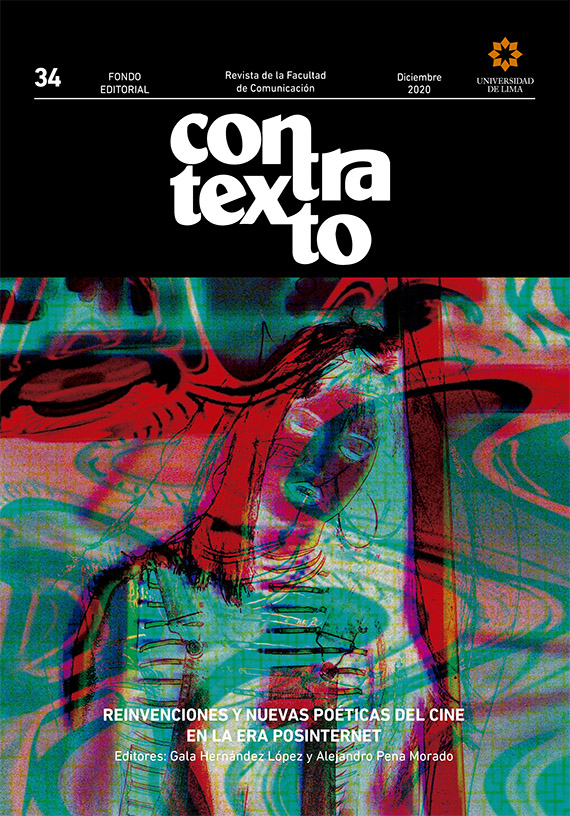Two countries, many childhoods: meetings to create with the films Carreto and Una niña, una escuela
DOI:
https://doi.org/10.26439/contratexto2020.n034.4874Keywords:
cinema and education, childhood and cinema, education and inclusion, creative exercises, cinema and Latin AmericaAbstract
Stephanie and Laura are two girls who find themselves in the uniqueness
of a mode of existence that does not always have space in everyday life and schools. Tinho is sensitive enough to perceiving Stephanie’s needs as intrinsic to any child’s. Thus, a silent and complicit friendship is born between them. Laura recognizes―in her family and at the heart of the politics of the country in which she was born―that all lives matter. Every effort is therefore valid to run a school that caters for a single child.
Based on the methodology for analyzing the creation of images from the Brazilian short Carreto and the Cuban short Una niña, una escuela, the article highlights the respectful way in which the directors build the relationship of children with special educational needs and their surroundings. The result of this analysis made it possible to share, in
the context of Law 13.006/2014, creative exercises based on these two films. The exercises proposed by the article, inspired by the methodology of creation pedagogy, can be developed with children, and aim to highlight Brazilian and Latin American childhoods, as well as to enhance the inventive relationship with the audiovisual material.
Downloads
References
Agamben, G. (2007). Profanações. Boitempo.
Alea, T. G. (2009). Dialéctica del espectador. Ediciones EICTV.
Alegria, J., & Duarte, R. (2008). Formação estética audiovisual: um outro olhar para o cinema a partir da educação. Revista Educação e Realidade, 33(1), 59-80.
Almacella, M. A. (2004). Educar con el cine. Ediciones Internacionales Universitarias.
Anderson, A. (Diretor). (2008). Una niña una escuela [Filme]. Cuba. https://www.youtube.com/watch?v=luCK5Jr0MCI&t=29s
Austen, J. (2017). Sensatez y sentimientos. Lea S.A. Ediciones.
Bárcena, F. (2015). La diferencia (de los idiotas). Revista Pro-Posições, 26(1-76), 49-67.
Barros, M. (2000). O livro das ignorãças. Editora Record.
Benjamin, W. (2002). Reflexões sobre a criança, o brinquedo e a educação. Duas Cidades.
Bergala, A. (2008). A Hipótese-Cinema: Pequeno tratado de transmissão do cinema dentro e fora da escola. Booklink; CINEAD-LISE-FE/UFRJ.
Bergala, A. (2012). Bom filme. Em A. Fresquet, & C. Nanchery, Abecedário de cinema com Alain Bergala. LECAV, DVD. 36 min., cor.
Comolli, J. L. (2008). Ver e poder. Cinema, televisão, ficção, documentário. UFMG.
Daney, S. (2007). A rampa. Cosac & Naif.
Eisenstein, S. (2002). A forma do filme. Zahar.
Fresquet, A. (2013). Cinema e Educação: Reflexões e experiências com estudantes de educação básica, dentro e “fora” da escola (1a ed.). Autêntica.
García Espinosa, J. (1970). Por un cine imperfecto. Fondo Editorial Salvador de la Plaza.
Girardello, G. (2015). Encontrar, escolher e articular filmes brasileiros para crianças: Notas a partir de uma curadoria. Em A. Fresquet (Ed.), Cinema e Educação: A Lei 13.006 (pp. 187-195). Universo Produções.
Kogut, S. (Diretora). (2007). Mutum [Filme]. Brasil. (95 min).
Lei 13.006, de 26 de junho de 2014. (2014). Brasília. http://www.planalto.gov.br/ccivil_03/_Ato2011-2014/2014/Lei/L13006.htm
Martínez-Salanova Sánchez, E. (2002). Aprender con el cine, aprender de película. Una visión didáctica para aprender e investigar con el cine. Grupo Comunicar.
Marques, C. & Hughes, M. (Diretores). (2009). Carreto [Filme]. Brasil. https://www.youtube.com/watch?v=eFYX5fDwpwA&t=18s
Mayor, A. L., & Miranda, C. (2015). Fronteiras do imaginário: Cinema-poesia nas escolas de educação básica. Em A. Fresquet (Ed.), Cinema e Educação: A Lei 13.006 (pp. 132-139). Universo Produções.
MINED. (2008). Ministerio de Educación de la República de Cuba. La Habana. https://www.mined.gob.cu/.
Oliveira Júnior, W. M. de (2015). Uma educação e um cinema no terreno? O espacial e as imagens verdadeiras em Fernand Deligny e Cao Guimarães. Em A. Fresquet (Ed.), Cinema e Educação: A Lei 13.006 (pp. 120-131). Universo Produções.
Omelczuk, F. (2016). O que se aprende quando se aprende cinema no hospital? Tese de Doutoramento em Educação, Programa de Pós-graduação em Educação, Universidade Federal do Rio de Janeiro.
Rancière, J. (2009). A partilha do Sensível: estética e política. EXO experimental org, Editora 34.
Vilhaça, M. (2010). Cinema Cubano: Revolução e Política Cultural. Alameda.
Downloads
Published
Issue
Section
License
All of the works published are licensed under a CC BY 4.0 Creative Commons Attribution license. (updated on March 1st 2021)
The content of the journal may be shared in any material or format. The content may be adapted, contributed upon and transformed. Both possibilities are only permitted in so far as they complete the following conditions:
- Attribution: Credit must be given where it is due, a link to the license must be provided and changes, if made, must be indicated. This should be done in the manner deemed appropriate, without suggesting that the licensor promotes you or your use of the material.
Ownership rights
The patrimonial rights for Contratexto are published under a Creative Commons BY 4.0 license, allowing authors to keep the patrimonial rights to their work without restrictions.
If a work published in Contratexto were to be copied, distributed, spread, or any other activities contemplated in the aforementioned license, the author(s) and the journal must be mentioned visibly and expressly.
Self-archive
This journal allows and encourages authors to post items submitted to the journal on personal websites or institutional repositories both prior to and after publication, while providing bibliographic details that credit, if applicable, its publication in this journal.


